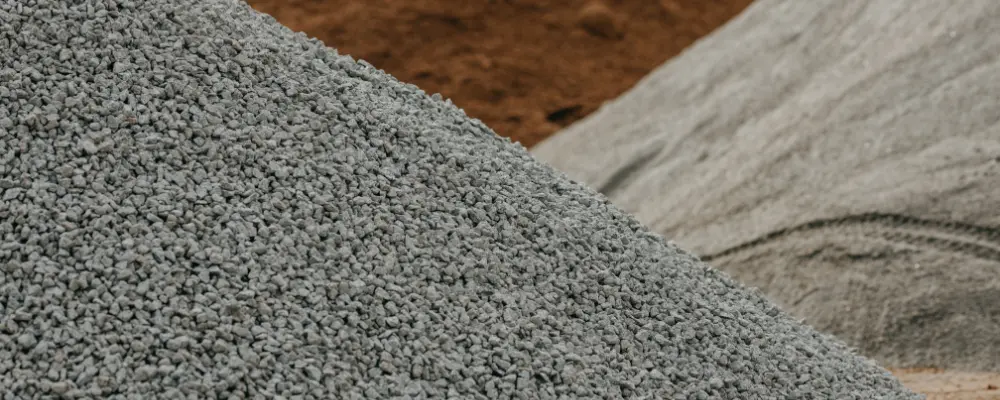In the face of rapid urbanization and environmental challenges, the construction industry has been under increasing pressure to adopt sustainable practices. Among these practices, using recycled construction materials has gained significant attention. These materials not only reduce the environmental impact of construction activities but also offer economic and practical benefits. This article explores the importance, benefits, types, and applications of recycled building materials, along with specific examples of recycled materials.
Importance of Recycled Construction Materials
Environmental Impact
The construction sector is one of the largest consumers of natural resources and a significant contributor to waste generation. The adoption of recycled construction materials reduces the demand for virgin resources, lowering the ecological footprint of projects. Additionally, reusing and recycling materials help minimise landfill waste, conserving valuable land resources.
Energy Conservation
Producing new construction materials from scratch often involves energy-intensive processes. Using recycled materials cuts down on the energy required for extraction, processing, and transportation, thereby reducing greenhouse gas emissions.
Regulatory Compliance
Governments and regulatory bodies around the world are encouraging sustainable construction practices. Incorporating recycled materials helps builders meet green building certification requirements, like LEED (Leadership in Energy and Environmental Design) and BREEAM (Building Research Establishment Environmental Assessment Method).
Types and Examples of Recycled Materials
Recycled construction materials include a wide range of products derived from previously used materials. Below are some of the most common types:
Recycled Aggregates
- Source: Concrete debris from demolished buildings and roads.
- Applications: Used as a base material for new roads, pavements, and foundations.
- Example: Crushed concrete recycled into gravel.
Recycled Wood
- Source: Reclaimed from old furniture, beams, and wooden structures.
- Applications: Flooring, cabinetry, and framing.
- Example: Reclaimed construction materials from barns and warehouses.
Recycled Steel
- Source: Scrap steel from old buildings, vehicles, and industrial equipment.
- Applications: Reinforcement in concrete structures, structural frames, and roofing.
- Example: Used steel beams reprocessed for new construction projects.
Recycled Plastics
- Source: Waste plastic bottles, packaging, and other plastic debris.
- Applications: Decking, insulation, and composite materials.
- Example: Plastic lumber made from high-density polyethylene.
Recycled Asphalt
- Source: Milled or crushed asphalt from old roads and roofing shingles.
- Applications: Road resurfacing and new asphalt production.
- Example: Recycled asphalt pavements (RAP).
Recycled Glass
- Source: Broken or discarded glass from windows, bottles, and mirrors.
- Applications: Concrete additives, countertops, and decorative elements.
- Example: Crushed glass used as aggregate in terrazzo flooring.
Recycled Bricks
- Source: Salvaged from old buildings and construction sites.
- Applications: Masonry, landscaping and paving.
- Example: Reused bricks for garden walls and walkways.
Benefits of Recycled Construction Materials
1. Cost Savings: Reusable materials often cost less than new ones, mainly when sourced locally or reclaimed directly from demolished structures.
2. Sustainability: Recycled and reclaimed construction materials help reduce environmental impact, making projects more sustainable and eco-friendly.
3. Resource Efficiency: Utilising used materials prevents unnecessary consumption of finite resources such as timber, sand, and aggregates.
4. Versatility: Many recycled building materials are highly versatile and can be adapted for various construction purposes, including structural, decorative, and functional applications.
5. Waste Reduction: By reusing and recycling construction waste, the industry contributes to a circular economy, reducing the burden on waste disposal systems.
Applications of Recycled Building Materials
Residential Construction
Recycled materials are increasingly used in residential projects to create eco-friendly homes. For example, reclaimed wood and recycled bricks are popular choices for rustic designs, while recycled steel can be used for modern structural elements.
Commercial Buildings
In commercial construction, recycled construction materials are used to enhance sustainability. Recycled aggregates and steel are often employed in large-scale projects, like buildings and shopping centres, to obtain LEED and other green certifications.
Infrastructure Projects
Recycled materials play a significant role in infrastructure development. Recycled asphalt and aggregates are extensively used in road construction, while recycled concrete serves as a durable base material for bridges and flyovers.
Landscaping
Reclaimed construction materials are ideal for landscaping projects. Recycled bricks and wood can be used for garden pathways, retaining walls, and outdoor furniture, while crushed glass and plastics can be incorporated into decorative features.
Challenges and Solutions in Using Recycled Construction Materials
Some challenges in using recycled construction materials are:
1. Quality Concerns: Recycled materials may not always meet the quality standards required for specific applications, especially for use in structural elements.
2. Cost of Processing: The recycling process can sometimes be labour-intensive and costly.
3. Limited Availability: In some regions, recycled materials may not be readily accessible.
4. Lack of Awareness: Builders and contractors may lack knowledge about the benefits and applications of recycled building materials.
Solutions for these challenges faced in using recycled construction materials are:
1. Standards and Certifications: Establishing quality standards for recycled materials can address reliability concerns.
2. Government Incentives: Subsidies and tax benefits can offset the cost of recycling processes.
3. Innovative Technologies: Advanced recycling technologies can improve the efficiency and scalability of processing used materials.
4. Awareness Campaigns: Educating stakeholders about the importance of recycled construction materials can boost adoption rates.
Future of Recycled Construction Materials
As the construction industry continues to embrace sustainable practices, the use of recycled and reclaimed materials is expected to grow. Technological advancements in material processing and recycling are likely to make these materials even more cost-effective and versatile. Moreover, the increasing focus on green building certifications and carbon reduction targets will drive greater demand for eco-friendly construction materials.
Conclusion
The integration of recycled construction materials into modern building practices offers immense environmental, economic, and social benefits. By reducing waste, conserving resources, and lowering carbon emissions, these materials contribute to a sustainable and resilient construction industry. From recycled aggregates and wood to innovative uses of plastics and glass, the possibilities are vast. As awareness grows and technologies evolve, the future of construction lies in the creative and responsible use of recycled building materials.

